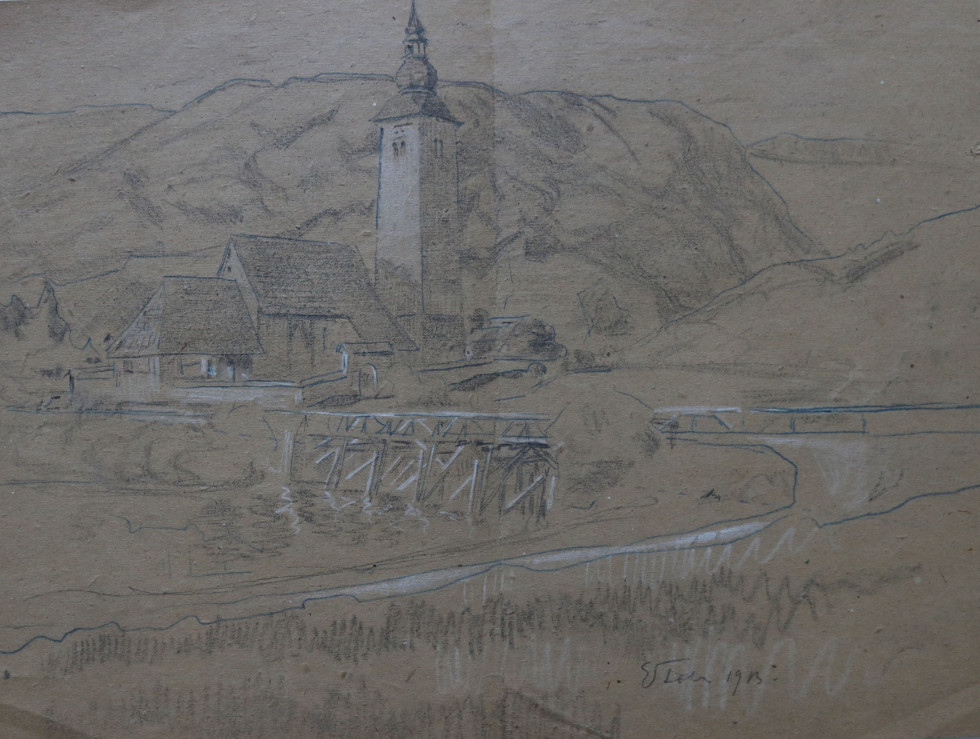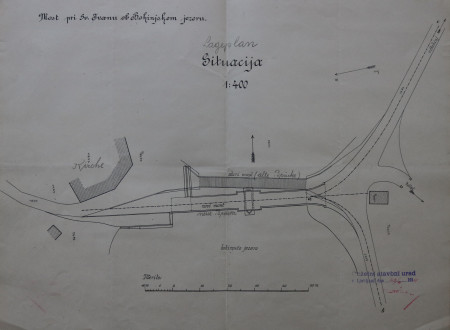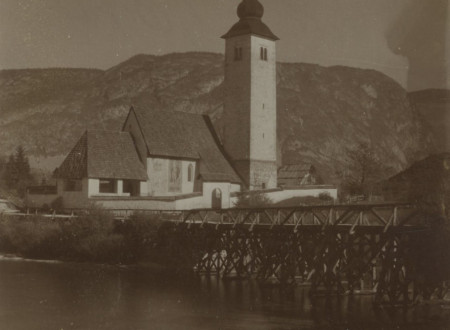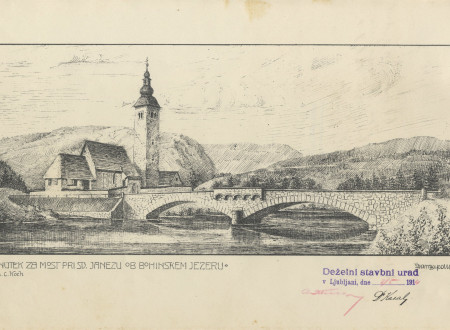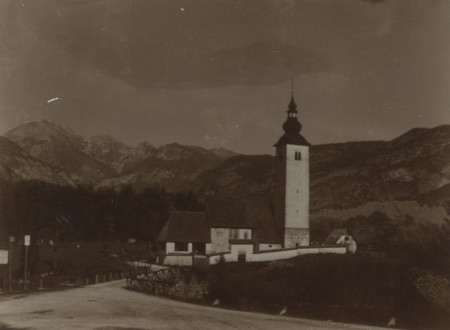The Building of the New Bridge at the Church of St. John the Baptist by the Lake Bohinj
The most typical and the most beautiful view that opens up to visitors of the Lake Bohinj is the view of the lake and the medieval church of St. John the Baptist located at the lake's eastern edge to which a stone bridge leads. It may appear that the sight has been there »forever«, but that is not so. Although the church is indeed very old, the bridge itself is less than a hundred years old and was built as late as 1926 to replace the earlier wooden bridge. It is also not made of stone, as it may appear at first sight, but of reinforced concrete covered with stone.
Although the bridge today is a delightful sight, the preparation for the building of this new bridge caused a lot of bad blood. The person who fought most persistently for the preservation of the old bridge was the painter Ernst Stöhr who had a studio at his villa, which today is a holiday facility called Počitniški dom na Skalci. Already in 1911, he wrote a letter of protest to the Imperial Royal Central Commission for Research and Preservation of Artistic and Historical Monuments, firmly taking a stand that the old wooden bridge should be restored in its original form. The road over the bridge led to Stara Fužina, Srednja vas, Koprivnik, Jereka and on to Triglav, but there was also another, shorter way to that. In summertime, the bridge was used mainly by hikers and a few times for the transportation of cargo, so according to Stöhr there was absolutely no need for a new stone bridge.
Since the preparations for the building of the new bridge seemed to continue undisturbedly, Stöhr was joined in his effort by Milan Pajk, a conservator at the central commission, who submitted an indignant petition titled ”Against vandalism in our beautiful country!”. He did, however, admit that due to increased car traffic in Bohinj there was a need for more solid bridges and he suggested a compromise to lay concrete foundations while at the same time preserve the original wooden fence.
Somewhat resigned over the whole situation, Stöhr observed that things were the way they were “because it is desire for profit that makes the world go around”. He hinted at the fact that there must have been commissions involved and that the interests of cement industry also played a part in the final decision. He was most appalled by the news that the new bridge was to stand in front of the old one, completely obstructing the view of the church. He wrote to baron Žiga Zois, to the land governor Šušteršič, and he was even contemplating writing to the crown prince.
Even though Stöhr never managed to persuade the authorities to restore the old wooden bridge, the original plans were nevertheless slightly altered so as to retain the views of the church and use real stone instead of stone imitation. Technical report states that ”the new bridge is going to be built next to the existing old one, which will serve as a temporary bridge during the construction process. The axis of the bridge is slightly turned and the bridge is to be located closer to the lake so as to straighten the turns of the road, particularly in the direction of Stara Fužina. The construction of the bridge is massive and consists of the two vaults made of reinforced concrete that have a span of about 20 metres. To blend the new construction with its surroundings, especially with the old Gothic church, the entire construction is to be covered with crude stone from the local area so as to keep the colour of the bridge in harmony with the colour of the rocks in its surroundings. The old bridge is a typical Slovenian wooden trestle bridge. Its flow profile is much smaller than that of the new bridge. The proper shape of the middle pier provides better water flow. The estimated cost of construction is 65.000 crown.
The project was set, funds were provided, land assembly was hurrying things along, and then World War I broke out. People’s attention was turned to other things as Bohinj became a transit zone between the battle front and hinterland. For military purposes a railway line from Bohinjska Bistrica to Zlatorog was built to deliver supplies to soldiers in the Krn Mountains. The railway served as a tourist attraction for a couple of years after the war, but was eventually pulled down. Road connections were constructed and they also built the new bridge by the Lake Bohinj, which we can still admire to this day.
Olga Pivk


